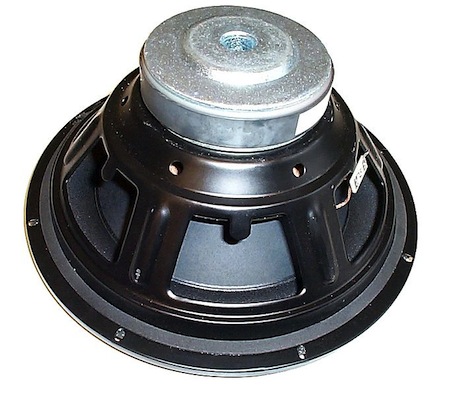Does anyone remember the transistor radio? You know, the rectangular one with the manual and slightly inaccurate dial at the top, and the remainder of the device dedicated to the speaker grill? If you follow the basic concepts of engineering, this design is a form of poetry. The speaker is the focus, and the dial itself only a necessary evil to find the channel. And it is a beautiful design of practical use.
Compare that to today’s mobile gadgets that can tune in literally thousands of Internet radio stations. This blows away that transistor radio by a factor of, well it really blows it away. And yet, with all of this power, you are forced to listen with either headphones or an external speaker. This is just not right.
But many Mobile Devices do have speakers, right?
Well, yes, they do have a tiny speaker, almost as if it was included as a product of a consumer wish checklist. The iPhone and most Android phones come with a speaker built into the housing that allows you to “almost” listen to your audio content with pleasure. That is, if pleasure means that you hold it in a certain position in a very quiet room.
Of course, if it’s a song that you are familiar with, the brain fills in enough to make it a nice experience. I could probably listen to Stairway to Heaven over a crystal radio set and still find it enjoyable. But I would find very little new music to be a good experience under those conditions. And they fare little better without the earphones with our mobile devices.
Will Tablets get it right? Examples say No
We have an exciting new computing paradigm unfolding around us, and that is the tablet computer. Of course, these devices are nothing new, but technology has finally caught up to where they are practical. The new tablet breed is built around the consumption of media, much like that wonderfully purposed transistor radio. But for a device that is built around consumption of media, the lack of a decent speaker is in the least, confusing.
The speaker on the iPad is a bit better than the one on the iPhone, but it is a race of margins. The Android tablets do no better. With the market so defined, it seems cast in stone that future tablets for at least the next few generations are going to be weak when it comes to a physical speaker.
And that seems like a shame. After all, that wide back plane would seem to be perfect for a nice pair of speakers. But the emphasis is on battery power and thinness, and when you add those two up there is very little left for the speaker. Put the speaker on the side. Check the consumer wish checklist – speaker included? Check.
It’s not just the latest generation
To be honest, it is not just the latest round of mobile technology that has eschewed the practical speaker for the checklist entry. I can remember using a PPC-6700 Pocket PC device, and the speaker was practically non-existent. I mean, why even mention that the phone has speakerphone capabilities without a speaker? Oh yeah, it’s a checklist thing. Eventually I widened out the tiny speaker hole on the back of the unit with an awl just to be able to use the speakerphone in a moving car. Today’s technology is only slightly better.
Has the paradigm of listening changed?
Maybe I am looking at this all wrong. Back when the pocket transistor was popular, people actually moved. You could find the radio at pools, beaches, worksites, and other places where the analog content was streamed from the radio station and consumed through the air via a speaker. People did physical work, swam, played volleyball, and more while jamming to the tunes from the local station.
But today the paradigm appears to have changed. Instead of moving, we stay still and consume the radio frequencies via the web and earbuds. We read, use the computer, and do other activities that fit the earbuds instead of fitting the earbuds to the lifestyle.
Now, I have seen advertisements for headphones that will actually work in the water. But they had it so right early on – set the speaker beside the pool, crank it up, and enjoy. It’s new technology – it works while you swim, and there are no wires to get in the way.
But the market has spoken
If the numbers are any indicator, then people are fine with the tiny speakers. Millions of these audibly handicapped devices are sold every day. What does this mean?
If you look at the situation from a tilted view – which is probably where I am coming from – then it could mean only one thing. People simply do not want to move any more. If their activity is more engaging than wired headphones will tolerate, then the average person does not do it. Hey, I am just interpreting the data. Otherwise they would not be selling like hotcakes.
We are moving less – that is the only conclusion that makes sense with me. Is it any wonder that we are getting bigger? While I am not saying that the lack of a decent speaker on our beloved mobile devices is the root of the problem, I am most certainly saying this – speakers that encourage more physical activity would definitely not hurt.


6 comments for “Modern Mobile Devices Need a Decent Speaker”